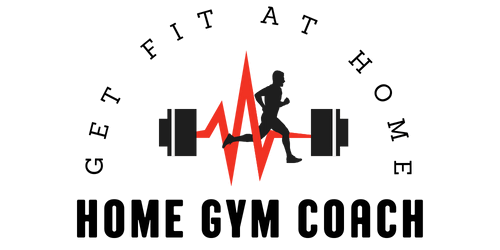Looking to build lean muscle? Look no further! This article introduces you to the world of custom workout plans specifically designed to help you achieve your goal of gaining lean muscle. With these personalized workout plans, you will learn how to optimize your strength training routine, tailor it to your body type and fitness level, and effectively sculpt a lean and toned physique. Say goodbye to generic workout plans and hello to a customized approach that maximizes your muscle-building potential. Let’s dive into the world of custom workout plans for building lean muscle!
Setting Goals
Understanding the Importance of Setting Goals
Setting fitness goals is an important aspect of any workout plan. Having a clear understanding of what you want to achieve helps to provide direction and motivation. Setting goals allows you to measure your progress and celebrate your accomplishments along the way. Whether your goal is to lose weight, build strength, or increase endurance, having a specific target in mind will help you stay focused and committed to your fitness journey.
Identifying Specific Fitness Goals
When setting fitness goals, it’s important to be specific. Instead of a vague goal like “get fit,” consider setting goals such as “lose 10 pounds in three months” or “increase my bench press by 20 pounds.” By setting specific goals, you can create a plan that is tailored to your needs and allows you to track your progress more effectively.
Assessing Current Fitness Level
Before starting any workout plan, it’s crucial to assess your current fitness level. This will help you determine where you’re starting from and where you want to go. Assessments can include measurements of body composition, strength tests, and cardiovascular endurance tests. By understanding your starting point, you can set realistic goals and design a workout plan that is suitable for your current fitness level.
Considering Time Frame
In addition to setting specific goals, it’s important to consider the time frame in which you want to achieve them. Setting realistic time frames will help you stay motivated and give you a sense of urgency. Keep in mind that building lean muscle takes time, so be patient and set milestones along the way to track your progress.
Determining Caloric Intake
Understanding the Role of Caloric Intake
Caloric intake plays a crucial role in building lean muscle. To build muscle, you need to consume a surplus of calories to fuel your workouts and support muscle growth. On the other hand, if your goal is fat loss, you may need to consume fewer calories than you expend. Understanding the role of caloric intake and how it relates to your specific goals is essential in designing a customized workout plan.
Calculating Basal Metabolic Rate (BMR)
To determine your daily caloric needs, it’s important to calculate your Basal Metabolic Rate (BMR). BMR is the number of calories your body needs at rest to maintain vital functions. There are several formulas available online that can help you calculate your BMR based on factors such as age, gender, weight, and height. Once you have your BMR, you can then factor in your activity level and goals to determine your total daily caloric needs.
Determining Daily Caloric Needs
Once you have calculated your BMR, you can determine your daily caloric needs by considering your activity level and goals. If your goal is muscle building, you will need to consume a surplus of calories above your total daily caloric needs. On the other hand, if your goal is fat loss, you may need to consume fewer calories than your total daily caloric needs. It’s important to consult with a healthcare professional or registered dietitian to ensure you are meeting your nutritional needs while working towards your goals.
Adjusting Caloric Intake for Muscle Building
When it comes to building lean muscle, it’s important to adjust your caloric intake accordingly. Consuming enough protein, carbohydrates, and healthy fats is essential for muscle growth and repair. Aim to consume a diet rich in lean protein sources, complex carbohydrates, and healthy fats. It’s also important to monitor your progress and make adjustments to your caloric intake as needed to optimize muscle building while minimizing fat gain.

Choosing the Right Exercises
Compound vs. Isolation Exercises
When designing a workout plan for building lean muscle, it’s important to include a mix of compound and isolation exercises. Compound exercises, such as squats, deadlifts, and bench presses, work multiple muscle groups simultaneously, allowing for efficient and effective workouts. Isolation exercises, on the other hand, target specific muscle groups and allow for targeted muscle development. Including a combination of compound and isolation exercises in your workout routine will help you achieve balanced muscle development.
Targeting Different Muscle Groups
To build lean muscle, it’s important to target different muscle groups during your workouts. This ensures that all muscle groups are adequately stimulated and helps prevent muscle imbalances. Designing a workout plan that includes exercises for all major muscle groups, such as the chest, back, shoulders, legs, and arms, will help you achieve a balanced physique.
Incorporating Cardiovascular Exercises
While the focus may be on building lean muscle, incorporating cardiovascular exercises into your workout plan is important for overall health and fitness. Cardiovascular exercises, such as jogging, cycling, or swimming, help increase cardiovascular endurance and burn calories. Aim to include at least 150 minutes of moderate-intensity cardio or 75 minutes of vigorous-intensity cardio per week, in addition to your strength training routine.
Varying the Intensity and Volume
To continuously challenge your muscles and promote muscle growth, it’s important to vary the intensity and volume of your workouts. This can be done by increasing the weight or resistance used, adjusting the number of sets and repetitions, and incorporating advanced training techniques such as supersets or drop sets. By regularly changing the intensity and volume of your workouts, you can stimulate muscle growth and avoid hitting plateaus.
Designing the Workout Schedule
Determining Frequency of Training
When designing a workout plan, it’s important to consider how often you should train. The frequency of your training sessions will depend on various factors, including your goals, fitness level, and availability. Generally, it is recommended to strength train each major muscle group at least twice a week, with at least one rest day in between to allow for proper recovery.
Creating a Balanced Routine
A balanced workout routine includes exercises that target all major muscle groups and allows for adequate recovery. Designing a routine that incorporates both strength training and cardiovascular exercises will help you build lean muscle while improving overall fitness. Aim to include a mix of compound and isolation exercises, along with cardiovascular activities, in your weekly workout schedule.
Allowing Sufficient Rest and Recovery
Rest and recovery are essential components of any workout plan. When you exercise, you create small tears in your muscles, and it is during the resting phase that your muscles repair and grow stronger. Failing to allow sufficient rest and recovery can lead to overtraining and hinder your progress. Aim to have at least one or two rest days per week to give your muscles time to rest and recover.
Incorporating Periodization Techniques
Periodization is a training technique that involves dividing your workouts into different phases or cycles. Each phase has a specific focus and intensity level, allowing for progressive overload and optimal muscle growth. By incorporating periodization techniques into your workout plan, you can avoid plateauing and continuously challenge your muscles for maximum results.

Customizing the Workout Plan
Tailoring Exercises to Individual Preferences
When designing a workout plan, it’s important to consider your individual preferences and interests. If you enjoy a particular type of exercise, such as cycling or dancing, incorporate it into your workout routine. Choosing exercises that you enjoy increases the likelihood of adherence and makes your fitness journey more enjoyable.
Considering Personal Constraints
Everyone has different constraints and commitments that can affect their workout plan. Consider factors such as your work schedule, family obligations, and access to equipment or facilities. If you have limited time or resources, be creative and find alternatives that fit your lifestyle. Remember, consistency is key, so finding a workout plan that works with your personal constraints is crucial for long-term success.
Modifying the Plan as Progress is Made
As you progress in your fitness journey, it’s important to modify your workout plan to ensure continued progress. As you get stronger and more experienced, you may need to increase the weight, intensity, or complexity of your exercises. Regularly assess your progress and make adjustments to your workout plan to keep challenging your muscles and reaching new goals.
Seeking Professional Guidance if Necessary
If you’re new to exercise or have specific goals or concerns, seeking professional guidance from a certified personal trainer or registered dietitian can be beneficial. They can help design a customized workout plan that is tailored to your needs and provide guidance on proper exercise form, nutrition, and overall fitness. A professional can also help keep you accountable and motivated on your fitness journey.
Including Progressive Overload
Understanding the Concept of Progressive Overload
Progressive overload is a fundamental principle of strength training and muscle growth. It involves gradually increasing the demands placed on your muscles over time. By consistently challenging your muscles with increased weight, resistance, or intensity, you force them to adapt and grow stronger. Incorporating progressive overload into your workout plan is essential for ongoing muscle development.
Gradually Increasing Weight and Resistance
To implement progressive overload, it’s important to gradually increase the weight or resistance used in your exercises. As your muscles adapt and become stronger, adding more weight or resistance will continue to challenge them. Aim to increase the weight or resistance by small increments, such as 2-5% per week, to ensure gradual and sustainable progress.
Adjusting Repetitions and Sets
Another way to incorporate progressive overload is by adjusting the number of repetitions and sets performed. As you become stronger, you can increase the number of repetitions or sets, or both. This helps to increase the volume of your workouts and stimulate muscle growth. Keep track of your progress and consistently challenge yourself by gradually increasing the number of repetitions or sets over time.
Incorporating Advanced Training Techniques
To further enhance muscle growth and prevent stagnation, consider incorporating advanced training techniques into your workout plan. Techniques such as supersets, drop sets, pyramid sets, and rest-pause sets can help increase the intensity of your workouts and stimulate muscle growth. However, it’s important to learn proper form and progress gradually when incorporating these techniques.

Monitoring and Tracking Progress
Keeping a Workout Journal
Keeping a workout journal is a valuable tool for tracking your progress and staying accountable. Record details such as the exercises performed, weights used, sets and reps, and any notes or observations. By tracking your workouts, you can monitor your progress, identify areas for improvement, and make informed adjustments to your workout plan.
Tracking Body Measurements and Weight
In addition to tracking your workouts, it’s important to track your body measurements and weight. Measuring your body composition, such as your weight, body fat percentage, and circumference measurements, can provide a more comprehensive view of your progress than just relying on the scale alone. Tracking these measurements over time allows you to see changes in body composition and celebrate non-scale victories.
Using Fitness Apps and Wearable Devices
In the digital age, there are a plethora of fitness apps and wearable devices available to help track your progress. These tools can help monitor metrics such as heart rate, steps taken, calories burned, and sleep patterns. By utilizing these apps and devices, you can gain insights into your activity levels, monitor your progress, and stay motivated on your fitness journey.
Regularly Assessing Strength and Endurance
Regularly assessing your strength and endurance is a great way to track your progress and adjust your workout plan accordingly. Choose specific exercises and record your performance, such as the weight lifted or the number of repetitions completed. By periodically retesting your strength and endurance, you can track improvements and ensure that your workout plan is effective for your goals.
Importance of Proper Nutrition
Choosing the Right Macronutrients
Proper nutrition is crucial for building lean muscle. When designing your workout plan, it’s important to choose the right macronutrients to support muscle growth and recovery. Aim to consume a balanced diet that includes lean sources of protein, complex carbohydrates, and healthy fats. These macronutrients provide the building blocks for muscle development and energy to fuel your workouts.
Understanding the Role of Protein
Protein plays a critical role in building and repairing muscle tissue. When designing your workout plan, ensure you’re consuming adequate protein to support muscle growth. Aim for a daily intake of around 0.7-1 gram of protein per pound of body weight. Sources of protein include lean meats, poultry, fish, eggs, dairy products, legumes, and plant-based protein supplements.
Incorporating Healthy Fats and Carbohydrates
While protein is essential for muscle growth, a balanced diet should also include healthy fats and carbohydrates. Healthy fats provide energy and support hormone production, while carbohydrates fuel your workouts and replenish glycogen stores. Aim to include sources of healthy fats like avocados, nuts, and olive oil, as well as complex carbohydrates from whole grains, fruits, and vegetables.
Hydrating and Supplementing when Needed
Proper hydration is often overlooked but is essential for optimal performance and recovery. When designing your workout plan, make sure to stay hydrated by drinking enough water throughout the day. Additionally, consider supplementing with vitamins or minerals if your diet is lacking in certain nutrients. However, it’s important to consult with a healthcare professional or registered dietitian before starting any supplements.

Avoiding Overtraining
Recognizing the Signs of Overtraining
Overtraining can hinder your progress and lead to injury and burnout. It’s important to recognize the signs of overtraining and adjust your workout plan accordingly. Signs of overtraining include persistent fatigue, decreased performance, increased injuries, irritability, and disrupted sleep. If you experience any of these symptoms, it’s important to take a step back, evaluate your training routine, and allow for sufficient rest and recovery.
Allowing Ample Recovery Time
Recovery is just as important as the actual workouts when it comes to building lean muscle. Allow ample time for your muscles to rest and recover between workouts. This includes getting enough sleep, incorporating active recovery activities such as stretching or light aerobic exercise, and taking rest days as needed. Listen to your body and prioritize recovery to avoid overtraining.
Balancing Intensity and Volume
Finding the right balance between intensity and volume is crucial to avoid overtraining. Intensity refers to the amount of effort or weight used during an exercise, while volume refers to the overall amount of work performed in a workout, such as sets, reps, and exercises. By finding the optimal balance between intensity and volume, you can push your limits without risking overtraining or injury.
Incorporating Active Rest Days
Active rest days are rest days that involve light physical activity or low-intensity exercises. Incorporating active rest days into your workout plan can help promote recovery without completely detraining. Activities such as walking, swimming, or yoga can help increase blood flow, relieve muscle soreness, and enhance overall flexibility and mobility. Aim to include one or two active rest days per week to maximize recovery and prevent overtraining.
Staying Consistent and Motivated
Setting Realistic Expectations
Setting realistic expectations is key to staying consistent and motivated on your fitness journey. Understand that building lean muscle takes time and consistency, and results may not come overnight. Set realistic, achievable goals and break them down into smaller milestones. Celebrate your progress along the way and remember that slow, steady progress is sustainable and leads to long-term success.
Finding Intrinsic and Extrinsic Motivation
Motivation plays a crucial role in sticking to your workout plan. Find both intrinsic and extrinsic motivations to keep yourself engaged and committed. Intrinsic motivation comes from within, such as the enjoyment you derive from exercising or the sense of accomplishment after completing a challenging workout. Extrinsic motivation may come from external rewards, such as tracking progress, joining a supportive community, or working with a workout buddy.
Rewarding Progress and Achievements
Rewarding yourself for reaching milestones and achieving goals can help maintain motivation and give you something to look forward to. Treat yourself to a massage, new workout gear, or a well-deserved rest day. Celebrating your progress and achievements along the way can help you stay focused, motivated, and committed to your workout plan.
Revisiting and Adjusting Goals Regularly
As you progress on your fitness journey, it’s important to revisit and adjust your goals regularly. As you achieve your initial goals, set new ones to continue challenging yourself and keep your workouts fresh and exciting. Regularly reassess your performance, make adjustments to your workout plan, and stay open to trying new exercises or training techniques. By adapting your goals and workout plan, you can ensure continued progress and maintain motivation.



